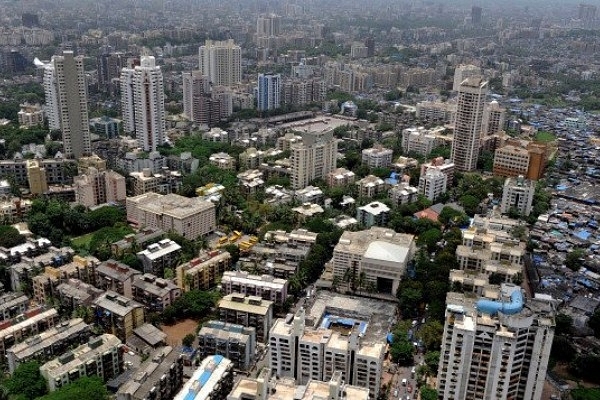Economy
Finance Ministry Using PMAY To Ensure MPC’s Rate Hikes Don’t Deter Home Buyers
- PMAY is likely to revive growth in the real estate sector and create jobs in the hinterland.
- So no matter what the RBI does on interest rates, the Finance Ministry is ensuring that higher rates will not puncture the growth in demand for homes.

Residential apartment blocks in the heart of Mumbai. (PUNITPARANJPE/AFP/GettyImages)
For those who think the Reserve Bank of India and the Monetary Policy Committee (MPC) decide interest rates, here’s some news: in many cases, the effective interest rates you pay are determined by the Finance Ministry.
The ministry can, by executive fiat, bring down the rates you pay by offering interest rate subventions – or subsidies. And one place where interest rates matter – in housing finance – the ministry has been consistently improving its schemes to enable more middle-class home buyers to benefit from the subvention.
Under the Pradhan Mantri Awas Yojana (PMAY), apart from the economically weaker sections, interest rate subsidies are offered at the rate of 4 per cent and 3 per cent to two income segments of middle-class home buyers. In the first case, those earning up to Rs 12 lakh can get a 4 per cent subsidy on loans up to Rs 9 lakh. This means that if the bank is charging you 9 per cent, you actually pay 5 per cent. For those earning up to Rs 18 lakh, you can get loans of up to Rs 12 lakh at a rate subsidy of 3 per cent. The two schemes are called MIG-1 and MIG-2 respectively.
While the MPC’s recent decision to raise rates may up housing loan rates marginally, these subsidies are still very substantial. More significant, there are now qualitative changes in the PMAY scheme which will enable buyers to afford bigger houses.
In November last year, the Housing and Urban Affairs Ministry upped the carpet area eligible for loans under the two middle-class housing schemes: 90-120 square metres of carpet area for loans up to Rs 9 lakh for MIG-1 borrowers, and 110-150 square metres for loans up to Rs 12 lakh for MIG-2 category.
This month (June), the ministry has again upped the carpet area for MIG-1 from 120 square metres to 150 square metres, and for MIG-2 from 150 square metres to 200 square metres.
Put another way, this helps you in two ways.
One, the large carpet area eligibility means that for the same size of loan you get a bigger house.
Two, in order to enable more buyers to participate, builders in some areas will try and squeeze prices so that more homes can be sold to larger numbers using the PMAY subsidy. This, again, benefits home buyers.
To be sure, loans of Rs 9-12 lakh for MIG-1 and MIG-2 will be available only in the very distant suburbs of metros and big towns, but in tier-2 and smaller towns, where land is more easily available and at cheaper prices, this will come as a big boon.
The boom in low-cost housing will thus be played out first in smaller towns and rural areas, where land is not priced out of the market.
PMAY is likely to revive growth in the real estate sector and create jobs in the hinterland. So no matter what the RBI does on interest rates, the Finance Ministry is ensuring that higher rates will not puncture the growth in demand for homes. What the RBI Governor proposes, the Finance Minister disposes.
The middle classes may be miffed that the Modi government has done little for them; but PMAY is their payback. Smart middle-class families will use two siblings to buy two homes, thus making the overall home bigger, since the main condition for PMAY borrowers is that they should not already own a home. Two siblings buying two adjacent homes should do the trick.
Support Swarajya's 50 Ground Reports Project & Sponsor A Story
Every general election Swarajya does a 50 ground reports project.
Aimed only at serious readers and those who appreciate the nuances of political undercurrents, the project provides a sense of India's electoral landscape. As you know, these reports are produced after considerable investment of travel, time and effort on the ground.
This time too we've kicked off the project in style and have covered over 30 constituencies already. If you're someone who appreciates such work and have enjoyed our coverage please consider sponsoring a ground report for just Rs 2999 to Rs 19,999 - it goes a long way in helping us produce more quality reportage.
You can also back this project by becoming a subscriber for as little as Rs 999 - so do click on this links and choose a plan that suits you and back us.
Click below to contribute.
Latest